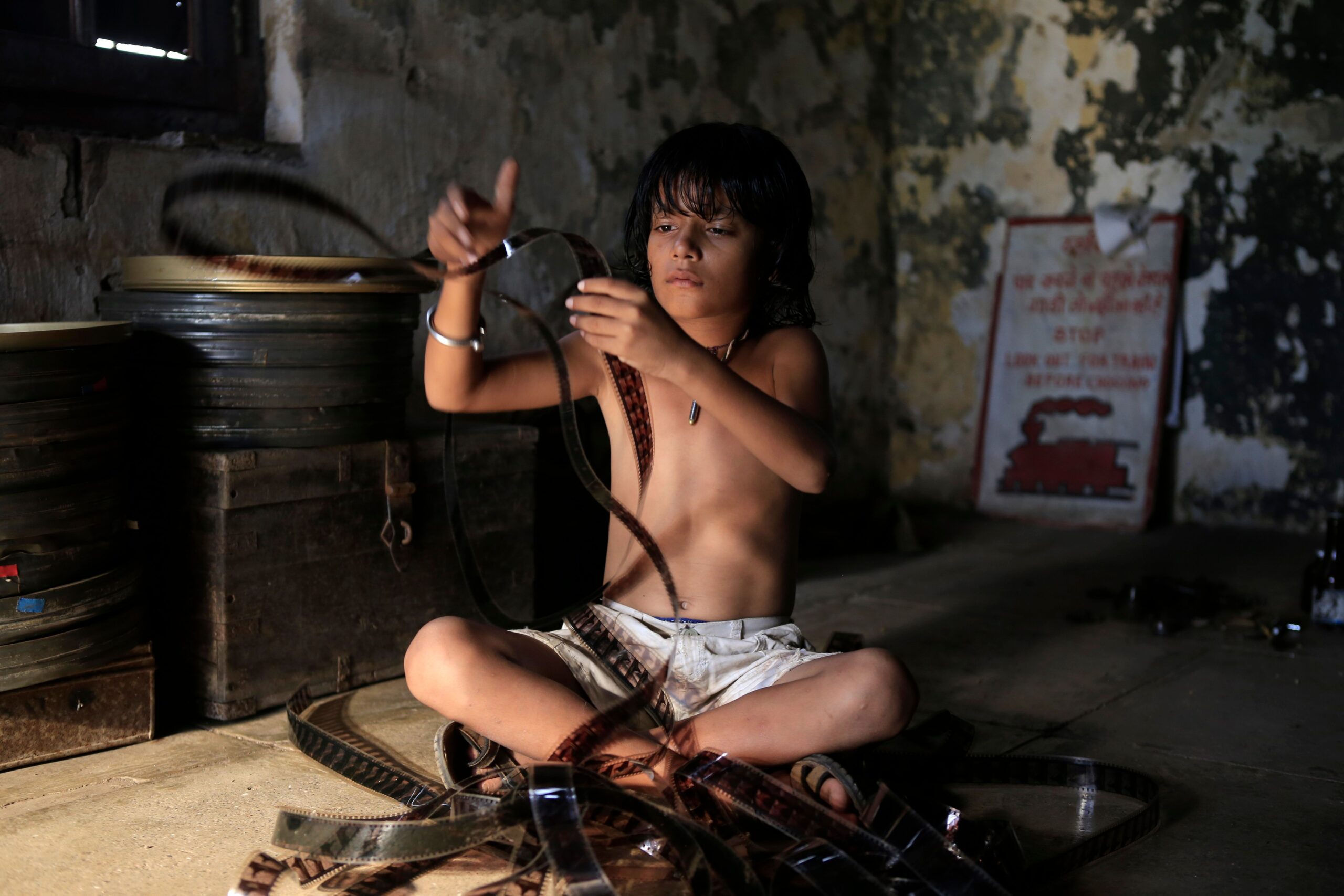
Last Film Show – REVIEW

This cinematic offering from India is quintessentially pure and simple storytelling and should touch the hearts of all audiences, leaving them somewhat overwhelmed at the plight of these young Indian children who, living in poverty, desperately strive to learn and achieve their dreams.
Samay is mesmerized by the magic of filmmaking when his father takes the family to the cinema. It’s a one off event, he explains, only because it’s a religious movie. Smitten, Samay skips school and continues to watch movies at the same cinema – he has bribed the projectionist with his mother’s delicious cuisine to watch the films free of charge.
“Movies were created to fool people. The film world is filthy and sleazy!” utters Samay’s father who beats his son once he realizes he has been going to the movies.

Samay is intrigued by light once management throws him onto the streets, banned from ever attending again. With his friends in tow he builds his own primitive movie projector, stealing reels of film and ultimately watching movies in hiding.
During his journey he learns the process of editing and creating sound for the simplistic movies he shows inventively using light, shadows, and pieces of film. But can his dream of becoming a filmmaker become reality since he’s living in poverty? More importantly will his father allow it?
The first thing audiences will notice from the opening frame of this movie is the meticulously choreographed use of colours in costumes and general things around the house. The brightness of colours perhaps contrasting the poverty stricken nature of their lives and highlighting the possibility of a promising change.
Reminiscent of Italy’s hit film Cinema Paradiso, this enthralling movie explores not only a child’s dream of making movies but ultimately shows that with a passion for learning dreams may come true, even in India regardless of financial status or cast system.
Another theme is the effect of technology on society – an advancement which even affects small Indian cinemas in poor areas with the installation of modern movie projectors.
The simplicity of the production and probable low budget compound to the reality of the story. The young child actors who have possibly never been in front of cameras before are delightful in their roles.
Take note of the symbolism in the final scenes and the relatable message which it delivers. Audiences should take the leap and watch this movie. There are no superheroes, no violence nor body count. It’s just a movie that should make audiences realise just how fortunate they are living in this lucky country!
★★★★
In Cinemas September 14









